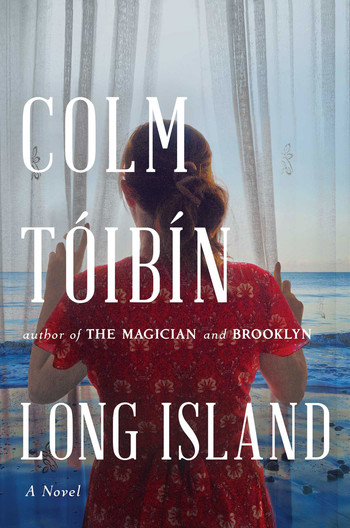Fifteen years ago, Colm Tóibín won readers’ hearts with his best-selling novel Brooklyn. Now, with the sequel, Long Island, he just might break them.
At its core, Brooklyn is a love story, or several — between both people and places. The main character, Eilis Lacey, is a plucky small-town Irish girl who immigrates to New York City just after World War II. Eilis is desperately homesick when she meets the Italian-American Tony Fiorello, and he pursues her, sweetly and persistently. But just as she is beginning to build a life in New York, tragedy calls her back to Ireland. There it’s easy for Eilis to forget her life abroad, especially as she starts to fall for Jim Farrell. At the end of Brooklyn, she must choose between Tony and Jim, America and Ireland. She picks Tony.
It’s a perfect Hollywood ending — and indeed, the book was adapted into an Oscar-nominated movie, with Eilis played charmingly by Saoirse Ronan. Moviegoers are left with the image of our heroine sailing back across the Atlantic and into Tony’s arms. Of course, in real life there is no guaranteed happily-ever-after, and what happens after the credits roll is the focus of the second novel in what Tóibín is calling the Eilis Lacey series.
Tóibín picks up the action twenty years later, on the titular island, where Eilis and Tony and their two teenaged children live on a cul-de-sac next to the rest of the Fiorello clan. “At times, Eilis found it stifling living beside Tony’s parents and his two brothers and their families,” Tóibín writes. “They often blamed her interest in privacy and staying apart as something Irish.”
That privacy is shattered when a man rings Eilis’s doorbell and tells her that Tony has had an affair with his wife, resulting in a pregnancy. When the baby is born, the man says, he will bring it directly to Eilis and Tony’s home and leave it for them to raise. Tony doesn’t deny the affair; his only weak attempt at appeasing Eilis is telling her that she will not have to raise the baby. Instead, his mother will do it, in the house next door, which is cold comfort to Eilis.
Angry and humiliated, Eilis decides to return to Ireland, alone, for the first time in two decades. As she settles back into her life there, she must reckon with some of the relationships she left behind: with her stern mother, who appears not to have kept any of the letters that Eilis sent from America; with her childhood best friend, Nancy Sheridan, widowed far too early; and most significantly with Jim Farrell, who never married and who has long wondered if Eilis made the right decision.
Eilis, too, thinks about the crossroads she once faced and how her choice shaped the marriage that she and Tony built. “Tony’s relief that she had come back from Ireland that time was so great that he never asked her why she had not replied to his letters. He had never inquired if she had met someone else in Ireland. Her being away that summer was simply never mentioned again. And that had made life easy between them.” Easy, perhaps, but also lonely. Now Eilis faces another crossroads at an unexpected time in her life.
Tóibín, Columbia’s Irene and Sidney B. Silverman Professor of the Humanities, writes beautifully about the struggle between the comfort of the familiar and the hope for something better. Like Brooklyn, this book is as much about place as it is people — about what makes a home and how to find your way in a life split between two worlds. Eilis has lived for twenty years on the cul-de-sac, sitting quietly at loud Sunday lunches with her in-laws and feeling like she doesn’t belong. And yet as she thinks back on Long Island from Ireland, she realizes, “The rooms in the house in Lindenhurst belonged to her as much as to Tony … and the leafy streets around, the salt air coming in from the ocean, the light shivering with expectancy on the days when the weather on Long Island was about to change, all this had become her life.”
Long Island isn’t all quiet contemplation — there’s enough romantic entanglement that a cinematic sequel wouldn’t be off the table. But the book shines when it gives us such artfully crafted depictions of its characters’ inner lives, particularly Eilis’s. It’s a pleasure to be back in the company of this strong, complicated heroine.



